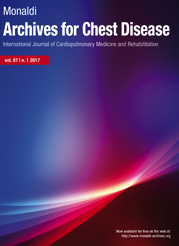Longitudinal changes in the 6-minute walk test and the Glittre-activities of daily living test in adults with cystic fibrosis
All claims expressed in this article are solely those of the authors and do not necessarily represent those of their affiliated organizations, or those of the publisher, the editors and the reviewers. Any product that may be evaluated in this article or claim that may be made by its manufacturer is not guaranteed or endorsed by the publisher.
Authors
With the increasing use of highly effective modulator therapy (HEMT) in adults with cystic fibrosis (awCF), it is necessary to determine the evolution of the most dynamic physiological markers of this disease, such as the 6-minute walk test (6MWT) and the Glittre-activities of daily living test (TGlittre). The present study aimed to evaluate the 1-year changes in the 6- minute walking distance (6MWD), TGlittre time, and quality of life (QoL) in awCF before the initiation of HEMT and to determine the impact of habitual physical activity (HPA) and chest physiotherapy (CP). This longitudinal study enrolled 24 awCF who completed the 6MWT and TGlittre. Pulmonary function tests, handgrip strength (HGS), and the Cystic Fibrosis Questionnaire-Revised (CFQ-R) were conducted. Measurements were collected at baseline (T1) and 1 year later (T2). The median body mass index increased between T1 and T2 [19.8 (18-24) vs. 21.4 (19-24) kg/m2, p=0.038]. TGlittre time decreased both in relation to the absolute values [3.10 (2.52-3.39) vs. 2.40 (2.00-3.00) minutes, p=0.001] and in relation to the predicted values [127 (116-150) vs. 108 (102-140) % predicted, p=0.001]. Although there was no increase in 6MWD relative to the predicted values, it increased relative to the absolute values [545 (463-654) vs. 617 (540-658) meters, p=0.041]. In relation to the group that did not engage in HPA, individuals who had HPA showed an increase in HGS between T1 and T2 [7.1 (0-20) vs. 0 (-12-3) kgf, p=0.031]. In relation to the group that did not undergo CP, individuals undergoing CP showed an increase in the 'treatment burden'–CFQ-R between T1 and T2 [16.1 (-3-18) vs. -11.2 (-28-1) points, p=0.049]. In conclusion, awCF performed better on TGlittre than on 6MWT. They experienced an improvement in body composition. HPA was correlated with peripheral muscle strength, as were CP and QoL.
Ethics approval
The study was approved by the Research Ethics Committee of the Pedro Ernesto University Hospital of the State University of Rio de Janeiro under protocol number CAAE-93586318.0.0000.5259.How to Cite

This work is licensed under a Creative Commons Attribution-NonCommercial 4.0 International License.






